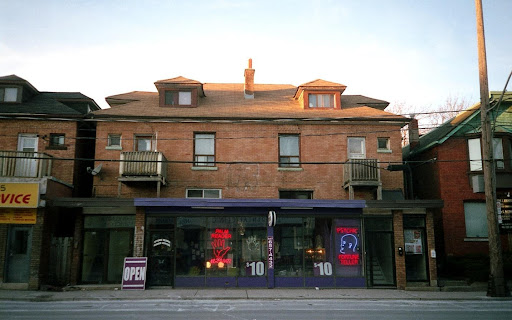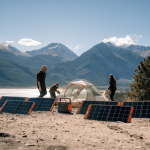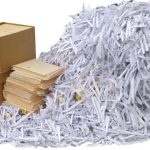One of the most crucial protective features of any commercial or industrial property is a well-maintained roof. That’s the reason why roofing contractors always recommend practicing proactive damage prevention and maintenance for your roof. The number of Commercial commercial buildings is rapidly expanding increasing due to the increased demand for office and industrial spaces. That has resulted in more and more commercial roofing specialists in the industry, and if you’re looking for one in Los Angeles and Orange County, Central Roofing is the only name you should trust.
Your commercial roof will accumulate a great deal of damage over the years, and even though your roof may look completely fine, it may develop a leak after a strong storm. Therefore, you should practice routine preventative maintenance on your roof to ensure it isn’t damaged to the point where you may need to replace the roof with a brand new one. So, take a look at some of the best preventative maintenance tips to safeguard your commercial roof today.
Table of Contents
1. Inspect the Roof After Strong Storms
Powerainfall are the most common causes of commercial roof damage in Losrful winds and excessive Angeles and Orange County. A strong storm can easily misalign your gutters, dislodge your shingles, and even cause severe water damage. Therefore, you need to remain on top of your roof maintenance to protect your commercial roof from the elements after the summer storms. When you’re inspecting the condition of your roof, here are some of the signs you should look for:
- Fractured drip edges
- Sagging or cracked gutters
- Missing or damaged shingles
- Exposed or missing fasteners
- Loose or bucked flashing
You need to ensure that any damage your commercial roof has undertaken after a strong storm is adequately repaired oin time. That will ensure your roof doesn’t sustain long-term damage.
2. Replace Your Missing Shingles
If you notice missing shingles on your commercial roof, you shouldn’t waste any time replacing them. That will ensure water doesn’t seep into the structure of your roof and starts leaking inside the building. Even a small amount of water can cause irreparable damage to the surrounding woodwork and jeopardize the roof’s integrity. Missing shingles can result in property damage and erosion, which is why you shouldn’t take too long to replace them.
3. Always Look for Signs of Algae and Mold Growth
Algae and mold growth has a corrosive impact on the shingles of your commercial roof and will ruin the roof structure. If you leave them unchecked, they can impact the overall lifespan of your roof. Therefore, always look for discoloration, black streaks, and blue-green patches on the exterior of your commercial or industrial roof. When you notice them, you should take measures to remove them from the roof so that you won’t need to replace your commercial roof entirely.
4. Don’t Leave Water Standing on Your Roof
One of the main issues that flat commercial rooftops experience, especially after heavy rains, is excessive water pooling in one spot. If you ever notice that rainwater isn’t properly draining from your roof and has stayed on your roof for more than 48 hours, you should contact a roofing contractor to check whether the roof is sagging. When you have standing water on your roof, it will add additional weight on top of the roof and can also erode your flashing and shingles.
5. Ensure Your Gutters Are Properly Aligned and Clean
Gutters play a vital role in managing the runoff since they are designed to channel debris and water away from the façade of your commercial or industrial property. Damaged or misaligned gutters won’t work to divert the rainwater, which will damage your foundation, doors, windows, and siding. You must ensure that you clean your gutters regularly and check their integrity before the rainy season starts so that there isn’t any risk of water and debris stuck on your roof.
6. Check the Roof Flashing’s Condition
The roof flashing acts as the sealer between your roof’s joints and prevents water from leaking through the seams around the dormer walls, chimney, and skylights. Most flashing is made from copper, galvanized sheet metal, and aluminum, which will experience natural corrosion over the years. You need to check whether the flashing has been installed correctly and is entirely rust-free so that you can insulate your roof’s most vulnerable areas and prevent expensive water damage to the roof.
7. Clear Organic Debris from the Roof
Heavy rainfall and windstorms are becoming common and can deposit piles of pine needles, leaves, and branches onto your commercial roof. It may not seem dangerous, but decomposing organic materials on your roof create the perfect condition for algae and mold growth. These materials will stain your shingles, and the roof will absorb the moisture, which weakens its structure. After a strong storm, cleaning and clearing debris from your roof will prevent gutter overflow and roof deterioration and ensure that the shingles remain in excellent condition.
8. Schedule Roof Inspections Regularly
The best way to maintain the condition of your commercial roof in Los Angeles and Orange County is to acquire the services of a licensed commercial roofing contractor to make preventative repairs and schedule regular inspections. You must schedule roof inspections regularly to ensure any damage to your roof is appropriately checked and repaired properly. That may help save thousands of dollars as you won’t need to replace your roof and install a new one on your commercial or industrial property.
The roofing experts at Central Roofing have helped numerous commercial and industrial property owners in Los Angeles and Orange County locate vulnerabilities and manage the upkeep of their roofs. They have served an extensive range of commercial and industrial buildings, including government buildings, apartments, hotels, churches, shopping centers, warehouses, and hospitals.



















